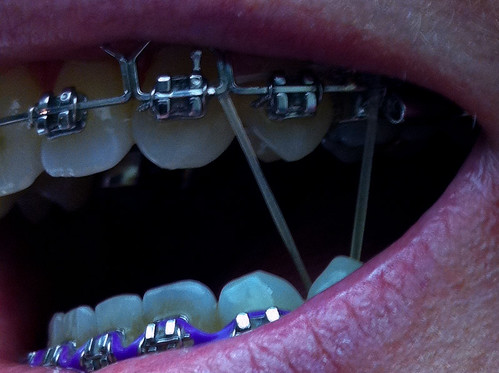
Traditional metal braces are a popular treatment among over 4 million Americans for straightening crooked teeth. While some only require metal brackets and wires to straighten their pearly whites, others need additional components like rubber bands. But why is that? Continue reading to learn some tips on how to properly wear rubber bands as well as how they can be beneficial in giving you straighter pearly whites.
How Braces Work
Braces consist of brackets that are affixed to your teeth and connected by wires. The brackets and wire function in tandem to apply pressure to your teeth, gradually shifting them to close gaps and straighten your smile. Although braces are typically successful, their effectiveness varies based on individual factors as well as how well you adhere to your orthodontist’s directions.
How Rubber Bands Work with Your Braces
Rubber bands, also known as elastics, can amplify the force applied to particular regions of your mouth by attaching to the brackets on your braces and can be placed in various positions. Elastics can be utilized to address the following concerns:
- Overbite – An overbite is a condition where the upper front teeth overlap excessively over the lower front teeth.
- Underbite – An underbite is the opposite, where the lower teeth extend beyond the upper teeth.
- Open bite – An open bite is a gap between the biting surfaces of the front or side teeth when the back teeth are closed.
- Crossbite – A crossbite is when the upper teeth do not come down slightly in front of the lower teeth when biting together.
Types of Rubber Bands
The types of rubber bands used for braces are classified based on the degree of force applied, size, material composition, and the intended use. Manufacturers typically vary in the degree of force exerted by rubber bands, which are categorized as light, medium, and heavy, and are measured in ounces or grams. The size is measured by their diameter, which is determined by how much they need to stretch to accomplish the desired movement.
Additionally, rubber bands used in braces can be made from either latex or synthetic materials, with latex being more affordable and pliable, while synthetic options are recommended for individuals with a latex allergy. Recent studies suggest that latex bands may provide more consistent force over time.
Uses for Rubber Bands
There are five main uses for rubber bands, which include:
- Class I rubber bands – These are positioned horizontally and link the brackets on one jaw to help close gaps.
- Class II rubber bands – These connect the molars of the lower jaw to the teeth of the upper jaw to correct an overbite.
- Class III rubber bands – These connect the molars of the upper jaw to the teeth of the lower jaw to correct an underbite.
- Cross rubber bands – These connect the teeth on the lower and upper jaw. They usually cross the front teeth to correct a crossbite.
- Vertical rubber bands – These link teeth in the upper jaw to ones below them to correct an open bite.
About the Practice
Sachse Family Dentistry at Woodbridge provides orthodontic treatment for patients of all ages in n inviting, comfortable setting. They offer personalized care, crafting individualized treatment plans to improve oral health and the appearance of your smile through the use of braces and rubber bands. They can also give you tips on how to keep your beam in excellent condition and continue progressing with your treatment. To schedule an appointment or learn more about braces, visit their website or call their office at (972) 848-0073.
